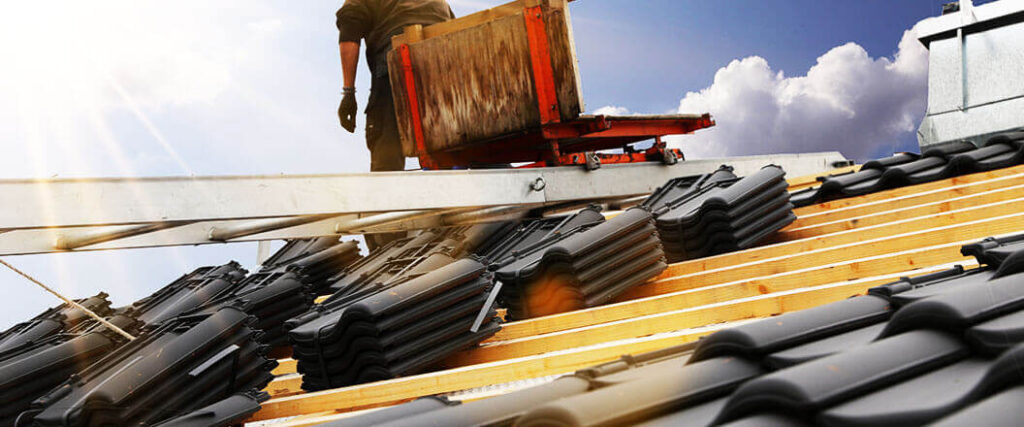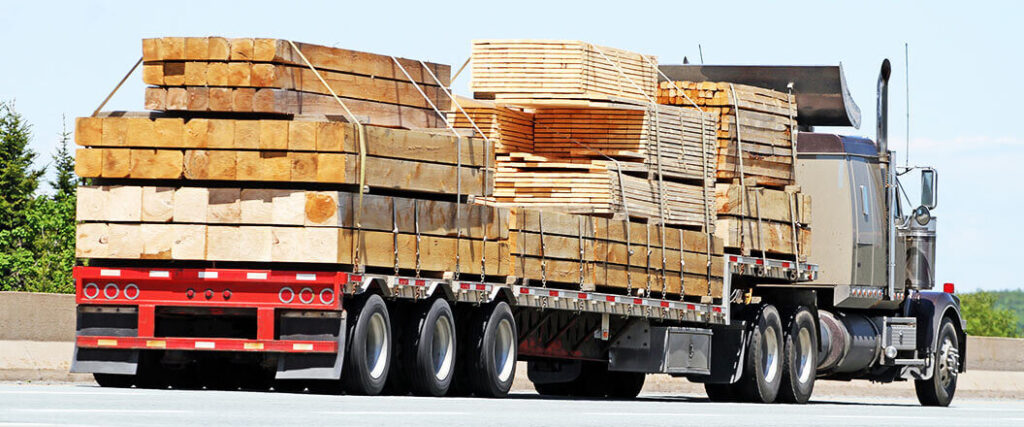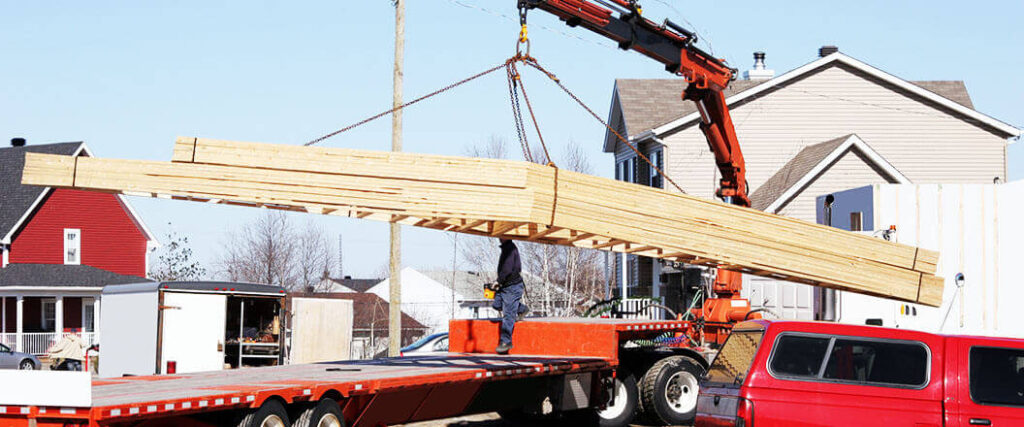Construction material transportation is a service that every project requires. To get all the resources delivered to a job site on-time, shippers need to organize different loads from various locations. That’s why it’s important to work with a trusted carrier to ensure everything is completed correctly.
According to FreightWaves, construction material transportation requires the help of a knowledgeable shipping partner. This type of freight is often large and oddly shaped, making the transportation process difficult. Since construction materials are considered oversized, adherence to strict regulations is required.
We’ve got the information you’ll need to prepare for every aspect of construction material transportation to get your job site going.
Construction material transportation is a logistics service that moves resources used for building projects. Workers at job sites require various items to complete their task. Therefore, construction transportation services are used to haul the resources they need.
Much of the materials used for building projects are extremely large. Therefore, this service is typically performed using a semi truck and a flatbed trailer that can accommodate the freight. Shippers will also need to find the resources for a building site in different locations. Once all the materials are gathered, the shipper will have to organize a construction freight load.

Building material transport often requires the movement of oversized goods. These kinds of loads exceed the standard freight dimensions, weight or both. Oversized cargo can also be awkward compared to normal varieties of freight.
Some common types of oversized construction materials include:
To ensure safety on roads and highways, states have adopted different regulations for the transportation of this type of cargo. Shippers and carriers will have to abide by these rules during the transportation of construction materials.
Some of the regulations that have to be followed when oversized construction resources are transported include:
Every state has slightly different oversized regulations, which means shippers will have to familiarize themselves with these prior to using construction transportation services. Shipments that travel through different states will also have to adhere to the rules of each.
Most building sites won’t have all the resources they need from one shipment. Therefore, shippers will need to complete oversize regulations for each shipment they send.

We have experience shipping freight of all kinds and an excellent carrier network with all truck types. Get a personalized quote from our industry experts.
Another factor that shippers will have to consider is route planning. Depending on the construction materials being transported, an alternate path might have to be used to transport the shipment.
If building resources are too tall, they could catch obstructions like bridges. Roads that are narrow or have many sharp turns might also be avoided. Shippers will also have to consider that some states restrict the transportation of oversized freight on certain roads. These factors influence what route is chosen for the transportation of materials in construction.

There are many types of building sites that require a variety of construction materials. That said, there are some resources that are more common than others. While many types of oversized construction freight that can be found at a job site, there are a few kinds that are more common than others.
These include:
Shippers should know how their building materials will be transported.
Culvert pipes are one type of construction material used in various infrastructure projects. These resources have a variety of uses.
Some of them include:
These pipes can come in a variety of different dimensions and weight. The type of infrastructure project determines what size will be used. Culvert pipes that exceed the legal weight and dimensions are considered an oversized load.
Construction material transportation of these items is typically completed using a standard flatbed trailer. If the culverts are short, they will be loaded horizontally. Longer pipes will be loaded on the trailer lengthwise. Due to their rounded shape, culverts can roll during the shipping process.
The following methods are used to keep them secure:
The best way to secure these pipes on a trailer is to use a combination of these methods. Loading and unloading this type of construction material can depend on size and weight . Light culvert pipes can be moved on and off a trailer using a forklift, while heavier ones will require a crane.
Another commonly used construction material are structural steel beams. These important items are used for a variety of different building projects.
This includes:
Structural steel beams are one of the longest and heaviest construction materials that can be transported. This type of material is identified with the letter that corresponds with its design.
Some variations include:
The design letter is followed by a number representing depth and another number representing the pound per foot. As an example, we’ve included some of the most commonly used W steel beams.
| Steel Beam | Depth Measurement | Weight Per Foot |
| W6 x12 | 6 inches | 12 pounds |
| W10 x 22 | 10 inches | 22 pounds |
| W12 x 53 | 12 inches | 53 pounds |
| W18 x 35 | 18 inches | 35 pounds |
| W24 x 68 | 24 inches | 68 pounds |
Provided by: Henry Steel
Every steel beam will follow this layout, regardless of the design letter. The length ofmaterial can fluctuate greatly, so overall weight needs to be closely examined. That said, shippers can expect their steel beams to exceed both legal weight and dimensional measurements.
In some cases, these building materials are short enough to fit on a standard flatbed trailer. However, some steel beams hang over the trailer hauling them. Shipping something this long might require an escort by a pilot vehicle, depending on state overhang rules.
Steel beams that are extremely long might need to be transported using a flatbed trailer that can separate into two separate sections. The excessive dimensions and weight of this type of construction material can make transportation expensive.
If a shipment of steel beams can fit on the back of a flatbed trailer won’t have to travel on a specialized route. This building material can be placed on a lowboy trailer if it's too tall. However, steel beams that exceed height requirements on a lowboy or hang over other flatbeds will need to travel down a specialized route.
While steel beams are extremely tall, they do need to be secured when construction material transportation services are performed. This can be by fastening chains or straps to the steel beams.
Modular buildings are another common type of construction freight that can be found at a job site. These types of structures are mostly manufactured inside a factory, rather than on location. Afterward, modular homes are shipped to the construction site, where they’re configured and the finishing touches are added.
They can be used for anything from offices to homes. Modular buildings can easily be disassembled and transported to another destination when needed. Since these structures are made in sections, they will have to be transported into separate parts.
Not all modular buildings are considered oversized freight. In some cases, these structures weigh less than the legal requirements in most states. It’s important that shippers verify if their structure(s) is considered oversized or not. If their modular building does exceed legal dimensions and weight, they’ll need to follow applicable regulations.
Flatbed trailers are used to transport these structures. The type of flatbed can vary depending on the dimensions of the building. Typically, modular structures are loaded using crane services like other types of oversized freight.
One thing that every building needs is a roof. That said, construction transportation services are very rarely used to ship this part of a house in its entirety. Instead, roofs are usually transported as disassembled trusses.
Truss size is based on the needs of the building being assembled. There are a few types of trailers that are used when transporting this construction freight.
This includes:
Usually, a standard flatbed trailer can be used to move this kind of building material. Taller trusses are often carried on a drop or double drop deck trailers to accommodate their height. Longer varieties of this kind of construction freight will require an extendable gooseneck.
Many roof trusses can be loaded or unloaded using a forklift, regardless of the trailer. However, frames with larger dimensions or weight will need to be hoisted using a crane. Trusses might be covered with a tarp during transportation to protect them from the elements if they’re shipped long distances.
Roofing tiles and shingles regularly accompany trusses. While these parts of a roof might not be considered oversized freight, it’s important to know how to prepare them for shipping.
Fortunately, there are a few simple steps that shippers can follow to do this.
Following these steps will help shippers properly prep their trusses and other roofing parts safely and correctly for carrier pickup.
Construction material transportation is also used for delivering wind turbines. These extremely large structures are used to power residential areas and small commercial applications. Wind turbines are assembled close together in wide open areas called wind farms. Transport services for these large devices are difficult to perform.
One reason for this is due to the remote areas that wind farms are located at, such as:
The roads leading to these locations are difficult for trucks to traverse when transporting wind turbines. This means that planning out a route and even making modifications to roads that these devices will travel on is required.
Once a route is decided, shippers will need to check for the various oversized regulations involved to begin the process. Transportation of these large devices is quite difficult. Wind turbines have to be disassembled into four separate parts for shipping.
This includes the following:
While each of these components are big, the rotor blades are by far the largest. Specialized trailers have to be used to transport this part of a wind turbine. The tower is so large that it has to be broken down into smaller sections that are transported using Schnabel trailers.
The nacelle is a smaller component of a wind turbine. That said, this section is still large and heavy enough to be considered an oversized load. Construction material transportation nacelles are completed using nacelle trailers.
Most wind turbines will require a total of 10 trucks outfitted with specialized trailers to transport to a build site. As with most oversized shipments, a crane will have to be used for the loading and unloading of these extremely large components.
Restraints such as straps and chains are used to secure the components of a wind turbine. In the case of rotor blades, cables and clamping systems might also be used to keep them in place.
Construction projects can’t be completed without the machinery needed to do the job. The type of equipment used at a build site can vary in size and weight based on the project.
Common types of construction machinery include:
In some cases, loading and unloading construction machinery is quite simple. In some cases, equipment can often be driven onto certain flatbed trailers like removable goosenecks. However, crane services can also be used if this option isn’t viable. The machinery is secured to the trailer by running chains and straps through the wheels.
Construction vehicles will need to travel on a route that can accommodate the dimensions of this type of freight. Finding the best route will require extensive preparations. Shippers will also need to obtain the applicable permits for their shipment.

Reach out to us at (855) 490-2433 or fill out our quick form and a live agent will be in touch shortly.
There is no set cost for construction transportation services. Various factors can cause this shipping service to fluctuate in price.
Some include:
While providing an exact amount for construction material transportation is difficult to do, shippers can calculate their costs on a per-mile basis. They can also factor in other related costs for this service after completing these calculations.

Shipping construction materials involves an abundance of careful planning and specialized carriers. Having your building materials arrive on time is important, but trying to orchestrate everything yourself can be an enormous hassle.
That’s what makes working with Heavy Haul and Oversized such a popular choice among shippers! With our network of carriers, we can find a transportation provider that will perform construction material transportation.
Arrange for your oversized freight to be transported using:
In addition to our expansive network of carriers, our customer service is second to none. At Heavy Haul and Oversize, we make sure that our customers get the support they need. If you’re ready to get started, then fill out our online quote form. Our team is also available at (866) 902-2713 to answer any questions that you might have.
Heavy Haul and Oversized
315 NE 14th Street #4122
Ocala, FL 34470